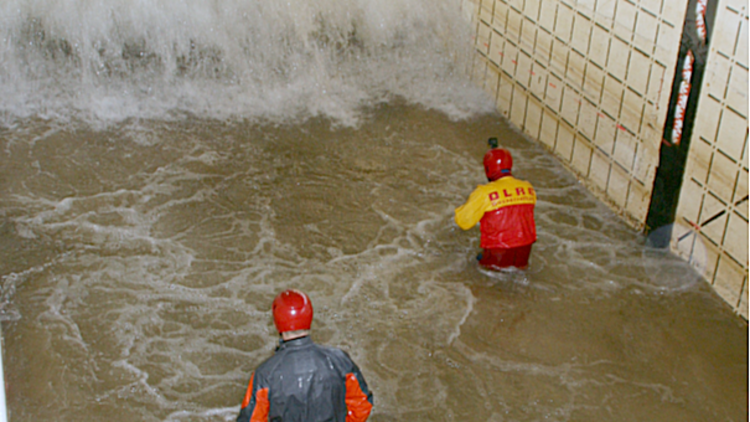… but fully grown breaker waves at the currently world’s largest wave flume near Hanover knocked over humans – in the service of science. And this is how it came about: During the annual conference Coastal Research KÜNO 2018, Dr. Jan Schulz, scientist of the research group Marine Sensor Systems at ICBM, met Dr. -Ing. Nils Goseberg, professor at Leichtweiß-Institute for Hydraulic Engineering and Water Resources at Brunswick Technical University.
While talking about waves in general and Tsunamis in particular, they came across the fact that data availability on the behaviour of human bodies exposed to marine waves is scarce, especially when it comes to reliable data. As Schulz, besides his scientific work, also works as a leader of a lifeguard unit especially trained for swiftwater rescue, the idea was born to improve data availability in being proactive. At the beginning of January, after about three months of planning, they were able to start their project: In a cooperation between the Coastal Research Centre Hanover (FZK), a common central facility of the Leibniz University of Hanover and the Technical University of Brunswick, ICBM and members of the Friesland branch of German Life Saving Association (DLRG) Varel, especially trained lifeguards for swiftwater rescue were exposed to wave forces under defined conditions at the Large Wave Flume (GWK) near Hanover.
Cameras, a laser scanner, permanently installed at the wave flume, as well as several motion sensors recorded the behaviour of the human bodies in the surging floods. Apart from the measuring data for the scientists, the rescuers got their money’s worth too: They were able to rehearse swimming and transport of injured persons across the surf zone, and also to test protective clothing and equipment, such as a side-scan sonar for searching of bodies in water, as well as to find out about the limits of application of their life saving appliances.
„This was a test-balloon to get acquainted with the local conditions“, Schulz says, referring to the project in which participated additional paramedics and logisticians, summing up to a total of one dozen persons on the part of DLRG. Even now, the scientists got valuable data. It is intended to continue the cooperation between science and water rescue at GWK still in the first half of 2019.



![[Translate to English:]](/f/5/_processed_/3/2/csm_ICBM-Logo-transparent-_91fe1c6774.png)
